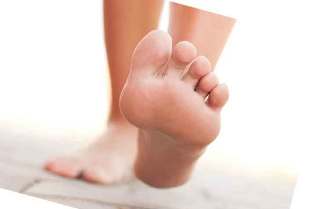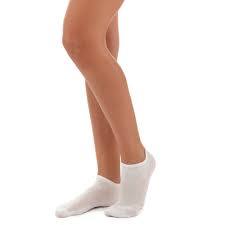Palmar-plantar Psoriasis affects the palms of the hands and soles of the feet, and the disease itself is a pathological auto-immune condition.

Psoriasis on the palms and the soles of the feet, together with the localization of the process on the scalp, is considered to be one of the most common forms of the disease. About 14% of the cases account for the pathological condition of the skin.
The reasons for the development of the disease
Although Palmar-plantar-Psoriasis is not typical for the binding of age between 15-35 years, you can see the high frequency of the development of the disease. There are and the connection with ethnicity. It is reported that increases in the case of persons of the Caucasian nationality at the age of 50 years the risk of developing this disease.
The exact cause of the pathological state up to the end not clarified and until now believed that the disease is auto-immune process. In normal operation, the person receives immunity protection from a variety of foreign agents such as viruses, allergens, protozoa, and other microorganisms.
In the case of Psoriasis is an error in the body occurs, then the immune system starts to produce aggressive substances against its own cells and tissues. Excessive amounts of T-lymphocytes (important immune system cells) and macrophages leads to the development of the inflammatory response and excessive Proliferation of skin cells, and why the characteristic symptoms and the occurrence of hyperkeratosis is observed.
Note! Hyperkeratosis is an excessive thickening of the Epidermis — the outer layer of the skin.
Some studies indicate a minor role of factor inheritance. For example, approximately 10% of the population the genes that developed in connection with Psoriasis, and only 3% of them will inherit the disease. Similar statistics lead to the thought about the presence of other, more-than-acceptable reason for the occurrence of the disease.
Additional risk factors are:
- Stress and emotional lability (sensitivity).
- Smoking and the taking of drugs.
- Background of the disease, the influence on the immune system.
- Infections, frequent injuries and cuts on the palms and soles of the feet.
In the 2006 study has been specified on the connection with dermatological pathology of diseases of the cardiovascular System and other conditions: hypertension, Diabetes mellitus, and hyperlipidemia.
The results were not up to the end clear. For a complete understanding of all the processes that the study of this topic continues and requires further investigation.
The Trigger of the disease (factors that influence the pathology, which can not be directly to her) the following:
- Sunburn;
- Insect bites;
- Allergens;
- Common bacterial infections such as pneumonia or a sore throat;
- Viral diseases, including HIV infection;
- Inflammatory disease of varying severity: Bronchitis, nasopharyngitis;
- Severe Alcohol Intoxication;
- Obesity.
Diagnosis of Palmar-plantar Psoriasis

Despite the rapid development of modern medicine, the establishment of the psoriasis on the hand examination of the cutaneous physician without special equipment surfaces, perhaps in the view. Physical examination is based on "psoriatic triad", the symptoms of dandruff occur in the slight scrape with the affected areas of the body.
The doctor draws attention to the history of the disease, as some constantly accepted medication triggers may development of a disease:
- Indomethacin and other nonsteroidal anti-inflammatory drugs (NSAIDs);
- Lithium and anti-malarial drugs;
- Sudden removal of corticosteroids;
- The intake of Penicillin, gidroksihlorohina.
In difficult cases, it is recommended that a comprehensive study, the laboratory-blood test, scan and ultrasound, as well as the exclusion of a fungal infection with the help of a highly qualified and specified mycological diagnostics. In the case of indications carried out dubious biopsy of the hearth of the skin.
The symptoms and the first signs of Palmar plantar Psoriasis
Among the most important types of the disease there are five variations. This occurs in 90% of cases, a characteristic visual history of the disease.
How does Palmar-plantar Psoriasis? The Patient has on the palms and soles psoriatic Plaques is determined — red, scaly patches of thickened skin, are subject to the formation of scales. In the focal points of the human itching, fever, and pain of varying intensity of feeling; in some cases, the skin is cracked and bleeding.
Available to influence the shaping of the finger nails:
- In the nail plates for defects, holes appear;
- The nail is thickened and discolored;
- Its Form changes.
Palmar-plantar type of the disease occurs, as part of a General process, but not only limited to the skin of the palms and soles of the feet. Psoriasis soles make it difficult to walk and wearing shoes. Damage to the Hand can not interfere with, the carrying out of works, but you superimposed the negative impact on the relationships with people. Ordinary situations, such as greeting the Hand, may be UN-this leads to confusion and social anxiety of the people to the development of social phobia.
A special feature of this Form of the disease is the presence of variants of the process, which is referred to in the following terms:
- Palmar-plantar Psoriasis, pustular Psoriasis, Barbera;
- Purulent Psoriasis;
- Pustular Dermatitis.
Listed disease of the skin causes the formation of clusters (Cluster) of the various pustules in the area of the Plaques. Overall, the rash is very similar to ordinary pimple. It is worth noting that this type of disease is enough to bear light treatments, and often requires a comprehensive approach for the therapy.
Please note! Palmoplantar pustular Psoriasis requires treatment with antibacterial drugs, the accession of bacterial infection.
Phase Palmar-plantar Psoriasis

As with all forms of the pathological process, Palmar-plantar localization, the three clinical stages:
- The Start-Up Phase. The appearance of a skin rash on the hands and feet. The platelets have a characteristic red color, can occur turn, off-white purulent; a Patient is worried about severe itching. Elements of the rash merge into large pockets. Their number depends on the individual course of the disease.
- The Phase of stabilization. Condition progresses, new pathological elements are not formed, but the old are always backed up. Itching gradually subsides, and the coloration of the Plaques is less bright.
- In The Last Phase. Accompanied Regression of the elements is missing, the itching. The treatment is supported or excluded; there are recommendations for maintenance of Remission and prevention of relapse.
In some cases, the disease is classified by the elements of lesions:
- The usual Form — a typical Manifestation on the skin;
- Horny Form is characterized by a hyperkeratosis and the typical red spots small, or absent;
- Form Of Barbera.
Treatment methods
Palmar — plantar Psoriasis is a chronic disease that may once again, regardless of the treatment. However, there are treatment methods with which a reduction of the deadlines for the intensification and prolongation of Remission.
The main treatment is an attempt to prevent the rapid growth of carrier substance, which lead to the development of Plaques, inflammatory conducted anti-inflammatory therapy. An Alternative method is the direct removal of dandruff.
Since the skin is thickened on the palms and soles of the feet, even in healthy people, the treatment of this localization often involves a combination of techniques and aggressive impact on the focal points.
First and foremost, in the case of Psoriasis of the hand and soles of the feet, the local treatment of assigned areas, in the Form of gels, ointments and creams:
- Analogues of Vitamin D;
- Ointments on the Basis of corticosteroids;
- Retinoids;
- Anthralin;
- Special Resins;
- Salicylic acid;
- Moisturizing agent for reducing swelling and relieving inflammation.
The usual side effects irritation, drying and thinning of the skin. In addition, sessions can be carried out photo-therapy:
- Natural UV radiation from the sun;
- Artificial UV-radiation with the aid of special apparatus;
- Excimer Laser;
- Photo chemotherapy.
It is important to know!Very important for a smooth transition to a natural light therapy. It is recommended to start with 5-10 minutes of direct sunlight per day. Later, you can gradually increase the exposure time to 30 seconds per day.
Drugs for the treatment of Palmar plantar psoriasis
Palmar-plantar psoriasis treatment comprises oral medications in a more severe Form of the disease:
- Methotrexate;
- Retinoids;
- Ciclosporin;
- Biological drugs, the activity of the immune system;
- Thioguanine;
- Hydroxy carbamide.
The most common side effect of these drugs is problems with the stomach-intestinal tract.
The course of the disease and prevention
Severe course of the disease to a certain extent, influence the development of serious conditions that threaten the health and life of patients, with 58% increased risk for myocardial infarction and 43% of the stroke. The most important immediate complications of Psoriasis of the hand and soles of the feet Psoriasis-Arthritis, and dystrophy of the nails.
National Medical Research Center identified a number of diseases due to the nature of the cutaneous pathology:
- Accompanying autoimmune condition: Crohn's disease, celiac disease, sarcoidosis, and others;
- Eye disorders: cataract and glaucoma, and infectious processes;
- Increased Blood Pressure;
- Parkinson's Disease;
- Diabetes mellitus;
- Diseases of the liver and of the kidneys;
- Osteoporosis;
- Depression.
On the note.With early treatment, and compliance with the necessary recommendations, and possible cases of psoriasis are reduced, and skin to minimize symptoms.
Recommended preventive measures:

- Take soap, daily baths with natural oils, minerals, salts and mild, not with artificial flavors and dyes;
- Use a moisturizer for the skin (in severe cases — twice a day), especially after the consumption of the water procedures. Not permitted the use of the hard towels. Simply attach to the skin with a soft, dry cloth, and then use the cream;
- Get a sufficient amount of sun light. You should consult your doctor, and choose the "Golden middle". To bring the weak sunlight not noticeable effect and intensive care increase the risk of developing skin cancer;
- Avoid triggers such as Smoking, alcohol consumption, Stress, and infections;
- Use Of Aloe Juice. You need to make lotions to the affected skin several times a day. There are official studies, the effectiveness of this plant prove in the control of inflammatory processes of the skin;
- Get at least three grams of Omega-3 fatty acids per day. You switch in the diet from fish, walnuts, linseed oil, or use fish oil capsules. Fatty acids reduce inflammation in the body;
- The intake of certain special additives on the Basis of the barberry, tea tree oil or dead sea salt.

























